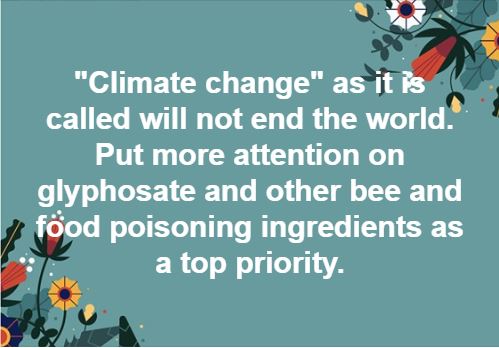
And fracking and plastic pollution in the ocean and deforestation and political corruption and child abduction and sex slavery and injustice in the courts and… ..are all things better deserving of our attention!

Tom's Blog on Life and Livingness

And fracking and plastic pollution in the ocean and deforestation and political corruption and child abduction and sex slavery and injustice in the courts and… ..are all things better deserving of our attention!
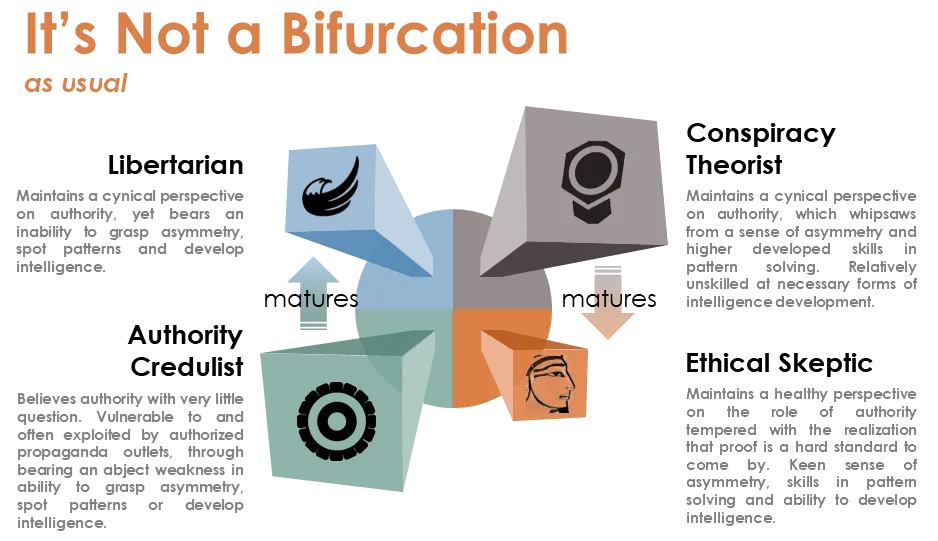
Bifurcation means fork. The infographic is trying to make the point that it is not an either/or situation with regards to belief in authority. I don’t know that I agree with the labels assigned or their definitions but what I can say from my readings is that 80-90% of people are Authority Credulists. They will do as authority tells them to do without moral evaluation or judgement. If you think what happened in Nazi Germany could not happen again you are not paying attention. Similar (and worse) catastrophes have happened many time since and one is presently being generated in the US.
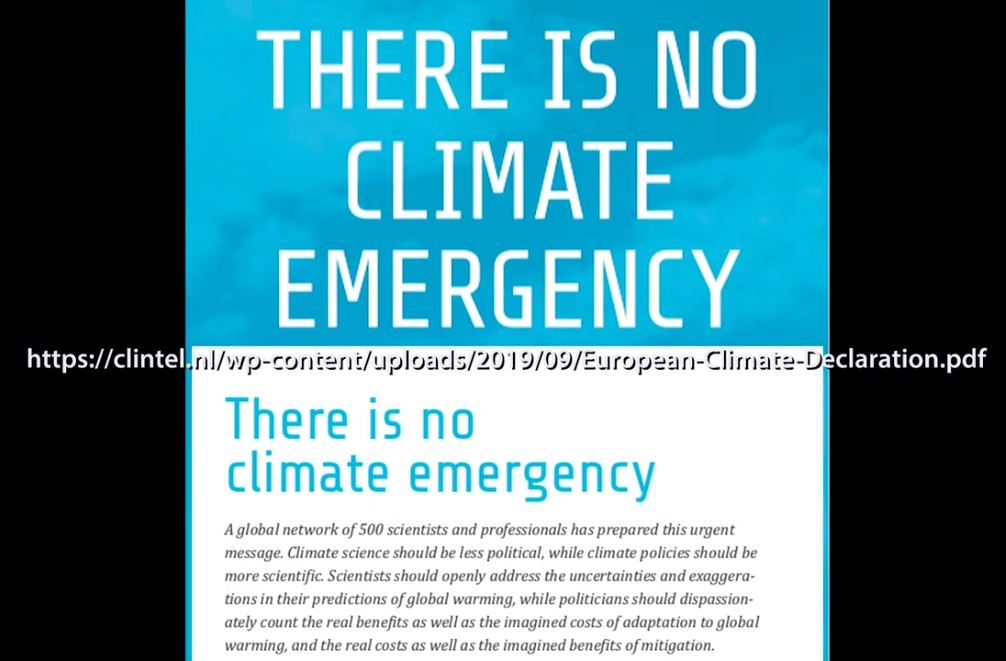
This message needs to be shared otherwise we stand to bear the brunt of expensive and onerous efforts to solve a problem that does not exist. Let alone cause concern, worry and even fear where there should be comfort and confidence. If we are to be concerned about something that needs changing, let’s look to plastic pollution in the oceans, leaking radiation from Fukushima, oil and gas pipeline spillages, pharmaceutical toxins in a waterways… …this list is long of clear and present dangers! Let’s quash this climate change distraction and focus on realities.
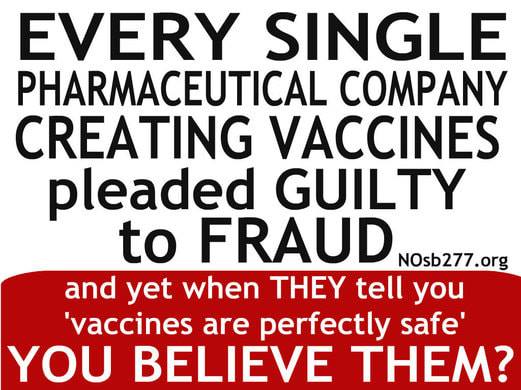
After several decades I have come to realise that leopards don’t easily change their spots.


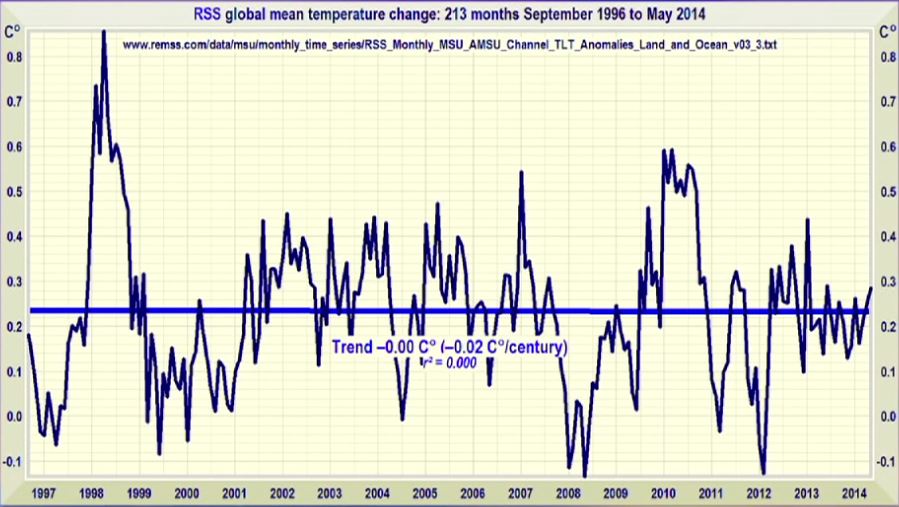
In a 1995 IPCC report, 5 scientists agreed global warming was not anthropomorphic. This statement was replaced by one from a single scientist claiming it was man-made. That sounds like consensus – NOT!
Melissa Smith
27 April
My cousin shared his story with me today. I knew he was a hero. I had no idea how much he had suffered.
To Whom It May Concern,
My name is Robert S—. I’m a medically retired Army veteran. I spent 12 long years on active duty serving my country. I joined at 18 years old, as have thousands of other young service men and women. I was an ignorant young man to say the least, when I joined. I knew nothing about the military, government, or pharmaceutical companies.
As I grew up, I was given a multitude of “shots” from different doctors throughout my childhood and on into my teenage years. By 1987, at age 8, I was diagnosed with ADD. I was unaware, as were my parents, what this diagnosis would mean for me. I struggled to stay on task more than other children in my classes, focus was difficult, and my parents and I fought frequently to keep me at passing levels. This pattern continued throughout my teenage years, as did my “vaccination schedule.” I was given a diagnosis of depression by age 13. I was withdrawn and sought attention in ways that were not healthy. I attempted suicide for the first time at 15, feeling that my only way out was death. I was able to overcome that episode and move past it but was still always searching for a way to stop my racing mind. I dropped out of school at 17 and decided to get my GED.
I was uninterested in most jobs and blew through several until I turned 18. I was intelligent, despite my lack of focus in school, and when I was approached by an Army recruiter, I decided to take the ASVAB with several friends of mine. I was the only one who passed the test. So, in September 1998, I shipped out to basic combat training at Fort Jackson, South Carolina. During reception we were stripped of all tobacco and contraband. We were herded like cattle, no shirts, into a medical bay and administered several shots per arm. (By this time, we’d been awake for over 24 hours; sleep deprivation was part of the process.) I didn’t think anything of it because I’d always been told vaccines keep us healthy. After the injections, we were rushed outside and drilled. That was Day One. Day Two began at 0400, woken not by the drill Sergeant, but by the cold sweat that came after the fever that gripped me in the night. I tossed and turned until we were roused from our bunks at 0500. I was charged with KP duty (kitchen duty) that day. I felt like death but I was a Soldier in training, no fever was going to get me down. Twenty five minutes into my duty, I collapsed. I was brought back to the barracks to my bunk and given bed rest after being looked at by someone, I can’t remember whom. The next thing I remember it was Day Four. Still, I thought nothing of my multitude of shots, I assumed it must be a bug or something.
I made it through basic, graduated, and moved on to my AIT (advanced individual training) at Fort Lee Virginia, where I received more vaccines. This time the fever wasn’t nearly as bad and I was back on my feet the next day, with light duty. The flu shot had given me the flu but I was told that’s normal. I advanced through AIT and was assigned to my permanant duty station, which was right down the street in Fort Lee. I was assigned to the 54th QM company (Mortuary Affairs). By this time in my life, I was much stronger and mature yet still very ignorant to many things (I was still only 19). Inprocessing meant more shots, boosters to previous shots. I was accustomed to it by now. I knew I might have a reaction and even told the medical personnel such. Regardless, I was jabbed several more times. I followed orders and soldiered on. Within three months, I was preparing to go to war for the first time. The Bosnian/Kosovo conflict was in full swing and morticians were in high demand. Outprocessing meant several more shots I hadn’t gotten yet. I was hesitant but took them, as I was not permitted to reject them anyway. My anxiety had grown pretty bad by then. Each shot combination affected me in ways I was unaware of. I was never an anxious person, so I told myself it was because I was going to war and nothing else. My joints ached. I remember thinking, at 19 years old, why do my joints ache so much? Oh well, it’s because I’m very active, I told myself. I was given the flu shot again while overseas and again had contracted the flu. Then, I dislocated my left shoulder somehow, but shook it off and was back at PT (physical training) two days later. After my first tour I returned to my unit and was debriefed and inprocessed back into garrison life. More booster shots awaited. I was still very early in my career, not even a full two years yet. I was 20. My body hurt, my head hurt, all the time. I told myself it must be dehydration. Then, I was diagnosed with acid reflux disease, but have no clue how that happened. I was at my apartment off post, playing touch football with the young neighborhood kids and dislocated my left hip. The fall relocated it and I limped home and went to the Army hospital. Motrin and water, like usual. This one side-lined me for two weeks, but then I was running again, every day. Between 1998 and 2003, I was given more shots than I can remember and I contracted the flu every year after getting the flu shot. I was a young spec-4, soon to be Sergeant. The war in the middle east was in full swing, and I outprocessed to go to Afghanistan. By that time, even though I was strong and young, I had somehow dislocated both my shoulders several times and my ankles were always in pain, but I never stopped.
The anthrax scare was big and we were forced to take the newly redistributed anthrax vaccine, along with the smallpox vaccine. I was scared for the first time about shots. I was assured by the medical personnel that they were 100% safe and harmless, so I felt better. We were all given a series of 4 anthrax shots and 1 smallpox before we left, on top of all the other booster shots. I, along with many of my brothers had reactions to the anthrax shots. High fevers, constant night sweats, high blood pressure, and sexual disfuction. We were Soldiers, we marched on and did our duty because that’s what Soldiers do. Once we deployed, we were given two more anthrax shots. More of the same, fevers and swollen arms, one older guy developed a huge cystic lump under his arm where he had been given the shot, but was assured it wasn’t from the shot. Five months into my tour, it was time for anthrax number 7. I went to the medical tent and that was that. Another swollen arm and pain for a day or so. Three more months went by and it was time for some more boosters so I went to the medical tent and was informed that I’d be getting my anthrax number 7. I told them I had already had it and it should be in my records because I got it from the same tent. Well, it wasn’t in my record, and I was forced to get it again, along with several other shots. This time I was made to wait 10 minutes before I was allowed to leave and it was a good thing because I had a bad reaction to whatever combination of shots they had given me along with the anthrax. I passed out in the tent and woke up in the sick bay portion of the field hospital. I had IV’s in my arm and was feverish. I spent two full days there until my fever finally broke and I was allowed to go back to my post. By this point in my career I was fully aware that vaccines could cause side effects and weren’t as harmless as I was being told they were. My anxiety had grown considerably. I told no one about how my heart felt, how my mind raced constantly. I finished my tour in Afghanistan and returned to my unit at Fort Lee in 2004. Of course, debriefing and inprocessing wouldn’t be complete without flu shots! Guess who got the flu again? Shortly after my tour, I was promoted to E-5, Sergeant, and I spent my time doing lots of running and combat training. In 2006, I was promoted an E-6, Staff Sergeant. I was known for being a hard charger and great leader, thus I was selected to lead a team in Iraq. Outprocessing was no different than before, except that they had stopped giving us all anthrax shots. I didn’t know why, it wasn’t my business.
My body had started to get some pretty bad wear and tear, but by this time, I was only 26. My unit was deployed to Iraq and I was sent to Baghdad. I spent three months working with a SFC (Sergeant First Class) until an opening in Mosul called for a compitent SSG to run it. I was transfered to Mosul and flew in. I met my team and began mortuary operations. My sleep had become so poor that I was put on sleep medication. The constant shelling and threat of suicide bombers got to me and I was forced to seek counseling and started medication treatment. I did not waiver in my duties. I was given my flu shot and multiple others but did not care. I was in the grip of PTSD and had been numbed, so the side effects didn’t matter anymore. We finished our tour and got shipped back stateside in 2007, and that’s when I was diagnosed with obstructive sleep apnea. I was 5’7” and weighed only 145lb. The doctors couldn’t give me an explaination as to why I was so sick and in so much pain all the time. I was deployed again in 2008 and it was my turn to lead another team into Iraq; we were ordered to go to Balad that time. We were given more shots, which caused me more anxiety, more pain. I was four months into my tour as NCOIC (noncommissioned officer in charge) when my body and mind failed me. I seemed physically fit, mentally capable but I was unable to carry the burden of my physical pain and mental anguish any longer. I was relieved of my position and flown back to Kuwait to finish out my last seven months of deployment there. When I got back stateside again in 2009, I was barely able to pass my PT test. At 28, my shoulders were locked up, my ankles were blown, and my hips hurt every time I walked,but yet I had never been blown up, taken any long falls, or engaged in hand to hand combat. Over the next year, I stayed in the garrison environment training Soldiers, but I was not the same. I could barely keep up with the slowest of us now. I was referred to the Army wounded warrior program, then transferred from Fort Lee Virginia to Fort Bragg, NC. I spent my last year there, a broken man at 30. My father can out work me and he’s 62. I have no predisposition of any illnesses in my family. My acid reflux, sleep apnea, joint pain and degradation, degenerative disk disease and mental illness can all be coincidental, sure. Or they can be part of the issue you can clearly see written in this statement. Thank you for the opportunity to express these words and I hope they help shed a bit of light on just how damaging forcing multiple vaccinations on small humans can be.
Sincerely,
Robert S— (SSG Retired)

“The people have spoken and their message is clear: the New World Order is finished,” Marine Le Pen announced to a starstruck tour group at the headquarters of the National Front party west of Paris.
“The elite are not safe hiding behind their propaganda fueled media institutions, making unaccountable decisions in Brussels, and silencing citizens who speak out against this insanity. When I am President a tidal wave of revulsion will be coming their way, the likes of which has never been seen before.” According to a documentary crew, the tour group burst into spontaneous applause.
In a recent BBC interview, Marine Le Pen held her own with a hostile interviewer, and laid out her vision for reclaiming French sovereignty.
“When I am elected President, I will go to the European Union and say that I want four sovereignties back. Legislative sovereignty: our laws are more important than EU directives. Territorial sovereignty: we decide who comes and stays in our country, we want borders. Thirdly, economic and banking sovereignty: I have the right to promote economic patriotism if I so wish. And of course, monetary sovereignty.”

As the Federal Government moves to ban cash transactions above $10,000, there’s a theory gaining traction that the real motive for the cash ban isn’t the so-called “black economy”, but rather, to give authorities greater control over your behaviour during recessions.
Paying more than $10,000 in cash could make you a criminal under proposed law
This theory, put forward by economists such as John Adams — and picked up by some federal politicians — has not been plucked out of thin air.
It is based on repeated public papers and statements by the international body in charge of financial stability — the Washington-based International Monetary Fund (IMF).
A recent IMF blog entitled “Cashing In: How to Make Negative Interest Rates Work”, explains its motive in wanting negative interest rates — a situation where instead of receiving money on deposits, depositors must pay regularly to keep their money with the bank.
As the blog notes, during the global financial crisis central banks reduced interest rates.
Ten years later, interest rates remain low in most countries, and “while the global economy has been recovering, future downturns are inevitable”.
“Severe recessions have historically required 3 to 6 percentage points cut in policy rates,” the IMF blog observed.
“If another crisis happens, few countries would have that kind of room for monetary policy to respond.”
The article then goes on to explain that to “get around this problem”, a recent IMF staff study looked at how it could bring in a system that would make deeply negative interest rates “a feasible option”.
The answer, it said, is to phase out cash.
When cash is available, cutting interest rates into negative territory becomes impossible as cash acts as an ‘interest rate floor’.
The RBA says cash will become a niche payment sooner than we think, as the Government considers imposing tougher penalties on cash economy activity.
Cash acts as “an interest rate floor” as people hold cash when bank deposit interest rates are at zero.
The thought of paying the major banks to hold your money isn’t one that most consumers would jump at.
The alternative — as risky as it may be — is hoarding cash, or making investments in tangible commodities like gold.
So, the end game, the article explains, is the IMF’s ideal world — one without cash.
“Without cash, depositors would have to pay the negative interest rate to keep their money with the bank, making consumption and investment more attractive,” it said.
This, would “jolt lending, boost demand, and stimulate the economy”.
In other words, the central banks get greater control to influence your behaviour and economic outcomes.
For those who have faith in monetary policy and central banks, this is no problem.
But one year on from the banking royal commission, faith in our financial institutions — and the regulators who failed to police the banks’ bad behaviour — isn’t exactly at an all-time high.
Negative interest rates could affect Australia
This weird world where savers are penalised — and borrowers get paid — is no longer just a problem for central banks in Europe and Japan.
With the cash rate down to a fresh low of 1 per cent, Australia has entered what’s been dubbed the “era of irrationality, impotence and inequality”.
The Reserve Bank’s consecutive interest rate cuts in June and July have taken the cash rate to an historical low at just 1 per cent.
Put this together with Governor Philip Lowe’s comment on August 9 at a parliamentary hearing.
He was asked by Labor’s Andrew Leigh what work the Reserve Bank has done on what “unconventional monetary policy” might look like as Australia heads towards the zero lower bound of interest rates.
Dr Lowe answered: “I think it’s unlikely, but it is possible. We are prepared to do unconventional things if the circumstances warranted it.”
In answering some other questions Dr Leigh threw his way, Dr Lowe also noted that “monetary policy is less effective than it used to be”.
“Once upon a time, when we lowered interest rates people were very quick to run off to the bank to borrow more to spend,” he said.
“In today’s environment people don’t run off to the bank to borrow more when interest rates fall; they are more likely to pay back their mortgage more quickly.”
Dr Lowe also noted international political tensions are weakening the global outlook, “and it’s very hard for central banks to completely offset that”.
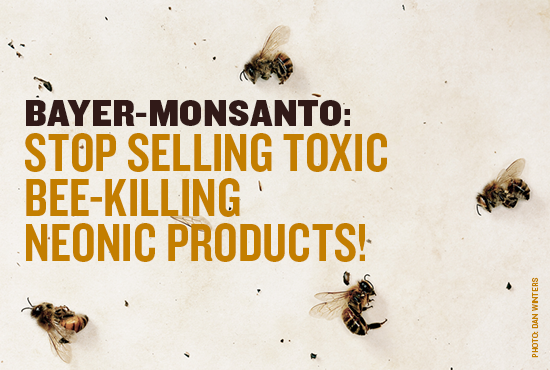
America’s bee crisis is getting worse. And if you don’t think this affects you, think again! If Australia’s food supply is substantially owned by foreign interests and there is a food crisis in their home country, we stand to go hungry too!
Our nation’s beekeepers recently reported the largest recorded winter losses of pollinating honeybees ever — nearly 40 percent. Why are these once-thriving insects dying at some of the highest rates?
A catastrophic flood of highly toxic pesticides — neonicotinoids or “neonics” — pushed by Big Ag is a leading cause of this collapse. Studies show that neonics sicken and kill bees. Reckless use of these poisons threaten our food supply — and possibly even our health. We need to put a stop to it, and together we will.
NRDC is currently waging a courtroom battle against Trump’s EPA that aims to restrict the use of bee-killing neonic products that also threaten endangered species. But to save our pollinators, we need to stop bee-killing uses of neonics on all fronts — so we’re putting the pressure on the world’s largest manufacturer of these toxic chemicals, Bayer-Monsanto.
Tom, we’re amassing a groundswell of public pressure against Bayer-Monsanto and we need your voice to send a message to its CEO, Werner Baumann, that’s too loud to ignore. Sign our petition demanding they STOP selling bee killing neonic products!
Why is the decline of honeybees causing so much alarm? Well, the future of our food supply is at stake. In fact, 70 percent of the world’s major food crops rely on bees.
And the neonic pesticides made by Bayer-Monsanto are poisons designed to kill insects — and are so toxic that, even in minute doses, they weaken the immune and navigation systems of bees, as well as their stamina and memory, making them less likely to survive.
The European Union and Canada have already restricted use of these toxic chemicals, but Trump’s EPA has opened the floodgates for agrichemical giants like Bayer-Monsanto to make millions off this assault on our pollinators.
We’re taking on Trump’s EPA in court to restrict the use of bee-killing neonic products, but we need your powerful voice to send a loud message to Bayer-Monsanto: Stop selling these toxic bee-killing poisons.
Toxic neonic pesticides aren’t only harming bees — they could be harming us, too. Neonic residues are found in 86% of our honey, as well as on apples, cherries, strawberries, and can even be found in baby food. Federally-funded research suggests that exposure to neonics in the womb and by children could increase the risk of developmental defects, autism, heart deformations, memory loss, and muscle tremors.
But instead of protecting pollinators and our food supply, the Trump administration and his EPA are coddling big chemical companies and ignoring critical information about honeybee losses. The EPA approved continued use of these bee-killing neonic pesticides, which are already used on 190 million acres of crops, and the administration reversed bans on using neonics in all national wildlife refuges.
So while NRDC takes on Trump’s EPA and neonics in court, we need to also build public pressure on Bayer-Monsanto. Sign our petition to Werner Baumann, Bayer-Monsanto’s CEO: the American people won’t sit by as our bees are poisoned and our health is threatened.
Thanks for taking on this agrichemical behemoth with us. Your voice is critical to our success.
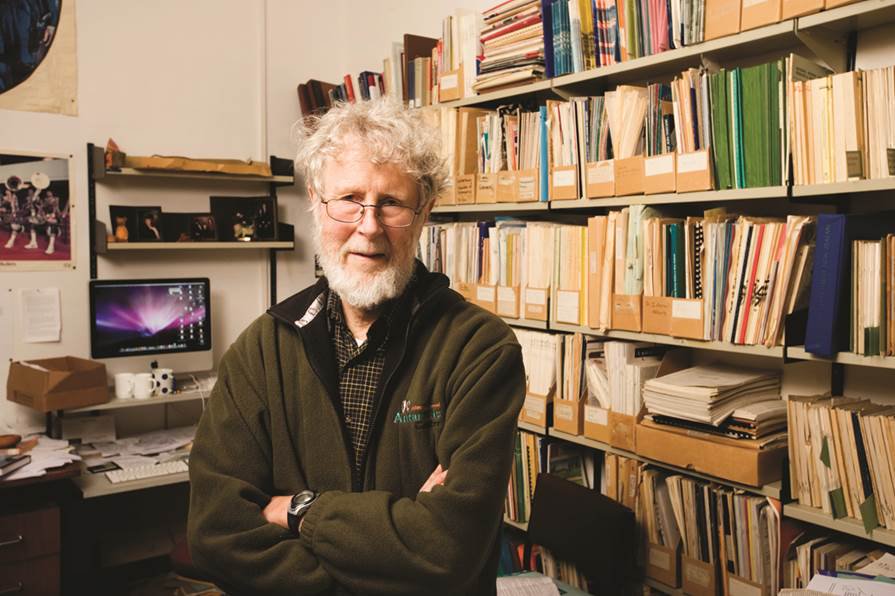
James R Flynn writes: I recently completed a book defending free speech. Emerald Press scheduled it for publication but then decided not to proceed. Here’s what it said about the book in Emerald’s September 2019 catalogue:
In Defense of Free Speech: The University as Censor
Author James R. Flynn, University of Otago, New Zealand
Synopsis: The good university is one that teaches students the intellectual skills they need to be intelligently critical—of their own beliefs and of the narratives presented by politicians and the media. Freedom to debate is essential to the development of critical thought, but on university campuses today free speech is restricted for fear of causing offence. In Defense of Free Speech surveys the underlying factors that circumscribe the ideas tolerated in our institutions of learning. James Flynn critically examines the way universities censor their teaching, how student activism tends to censor the opposing side and how academics censor themselves, and suggests that few, if any, universities can truly be seen as ‘good.’ In an age marred by fake news and social and political polarization, In Defense of Free Speech makes an impassioned argument for a return to critical thought.